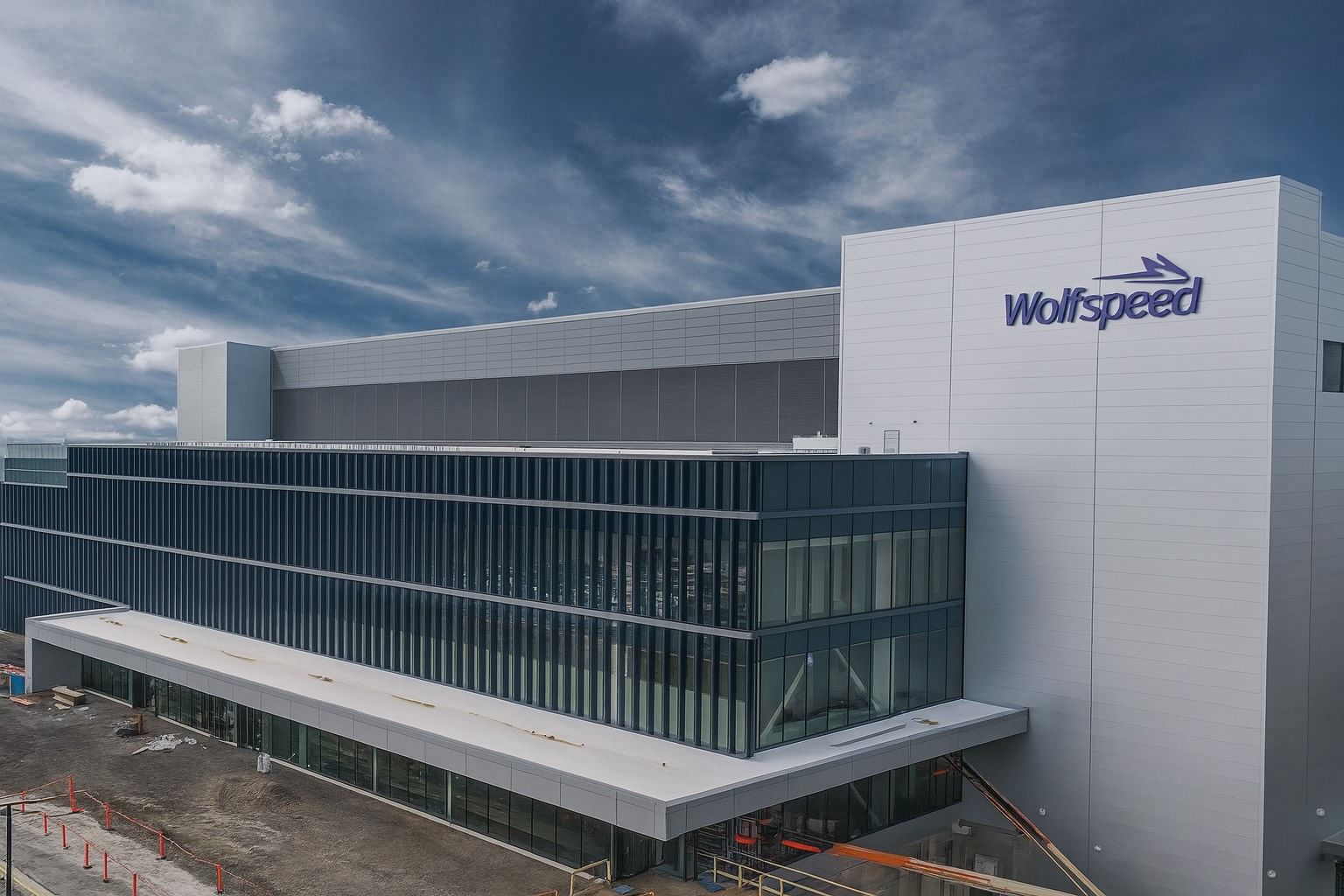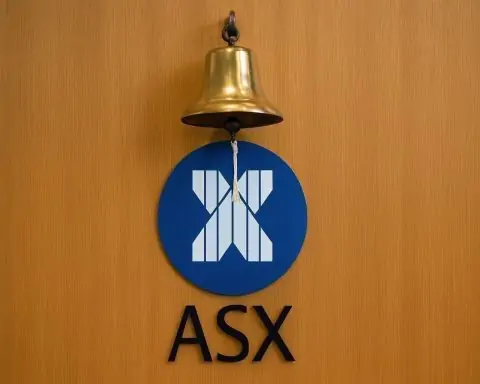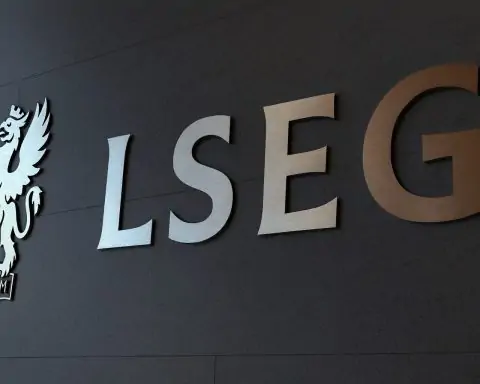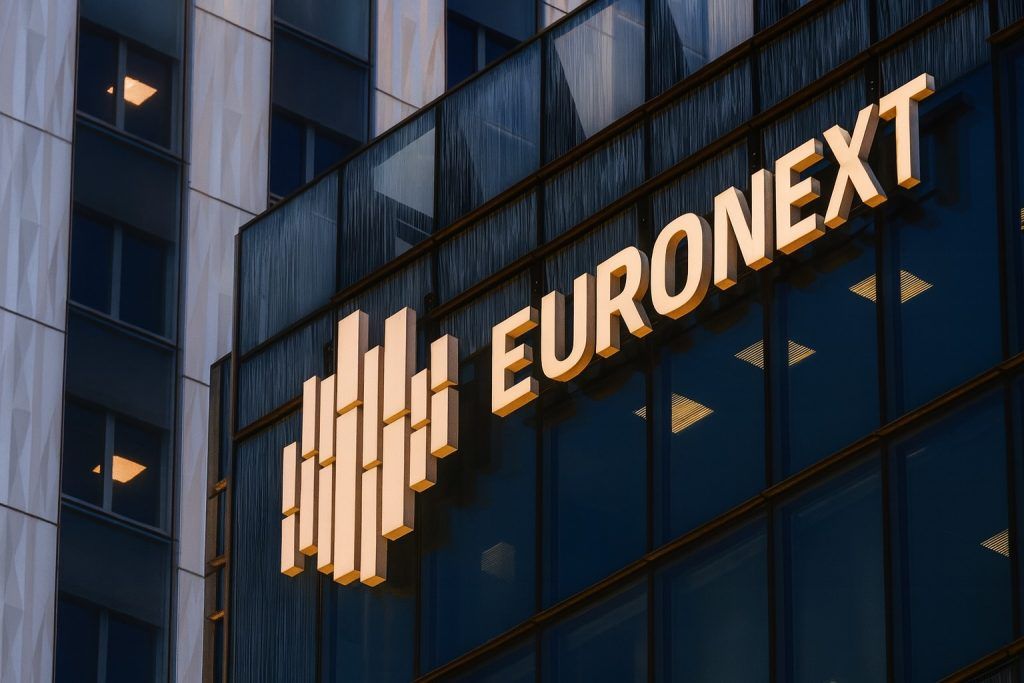- Stunning 1000% Surge: Wolfspeed (NYSE: WOLF) stock rocketed from penny-stock levels to around $30 per share after emerging from Chapter 11 bankruptcy in late September – an intraday jump of over 1000% on Sept. 29, followed by another 33% gain the next day [1]. It now hovers near $29–30 as of Oct. 27, 2025, giving the company a market cap around $0.7–0.8 billion [2].
- Bankruptcy Reset: The chipmaker slashed ~70% of its $6.5 billion debt and cut interest costs by ~60% through a speedy bankruptcy restructuring [3] [4]. All old shares were canceled (legacy shareholders got only ~3–5% of the new equity) [5], and new CEO Robert Feurle declared it “the beginning of a new era” for Wolfspeed [6].
- Volatile Post-Rally Trading: After peaking in the mid-$30s, WOLF stock has pulled back slightly – trading flat in the high-$20s over the past week amid profit-taking. Traders describe it as one of 2025’s wildest rides, driven by speculative frenzy and short-covering [7]. Chart analysts point to support around $20–22 (where shares settled after the initial spike) and resistance near ~$34 (the recent high) [8]. Such technical levels suggest continued high volatility ahead.
- Analysts Remain Cautious: Despite the buzz, Wall Street is skeptical. Most analysts rate WOLF a Hold, with a consensus 12-month price target around $9 – implying ~70% downside from current prices [9]. They warn the stock’s surge far outpaces fundamentals (Wolfspeed is still unprofitable), and expect shares could drift back to single digits once the bankruptcy hype fades [10].
- EV Chip Leader in the Making?: Wolfspeed is a pioneer in silicon carbide (SiC) semiconductors, which offer superior efficiency for electric vehicles, renewable energy, and advanced electronics [11]. Its SiC power chips are used in EV inverters and charging systems to extend range and reduce losses. The company has inked supply deals with major automakers (e.g. GM, Jaguar Land Rover, Mercedes) and aims to be a leading SiC provider for the EV boom [12] [13].
- Recent Developments: In September, Wolfspeed launched commercial production of 200mm SiC wafers – a next-gen technology to scale up chip output [14]. To cut costs, the firm is closing its older 150mm fab in Durham, NC by end-2025 and scrapped plans for a €3B German plant in Saarland [15]. These moves “streamline operations around [the] 200mm platform” and refocus resources on its new U.S. factories [16]. Wolfspeed’s advanced new fab in New York and materials facility in North Carolina (boosted by a potential $750M US CHIPS Act grant) are expected to meet customer demand from a consolidated American manufacturing base [17] [18].
- Upcoming Earnings & Outlook: Investors are now looking to the Oct. 29, 2025 earnings call for Wolfspeed’s fiscal Q1 results [19]. Key questions include whether revenue is stabilizing (after a 2024 slump) and if losses are narrowing. Any updates on EV customer orders or guidance will be pivotal. Broader market factors also loom: EV demand trends (which slowed earlier in 2025) and high interest rates could impact Wolfspeed’s recovery. Geopolitically, U.S.–China trade tensions have spurred government support for domestic chipmakers like Wolfspeed [20], but also intensified global competition. Rival giants (Onsemi, STMicro, Infineon) and Chinese upstarts (backed by state subsidies) are racing into the silicon carbide arena [21].
A Soaring Stock After Bankruptcy
Wolfspeed’s stock story of 2025 has been nothing short of extraordinary. In just one week, WOLF went from essentially worthless to a $30 stock, after the company executed a lightning-fast Chapter 11 bankruptcy exit. The restructuring, approved in September, wiped out most of the old shareholders but dramatically de-levered Wolfspeed’s balance sheet [22] [23]. Roughly $6.5 billion in debt was slashed to about $2.0 billion, extending maturities to 2030, and only ~25.8 million new shares were issued (mostly to creditors) [24] [25]. This set the stage for a massive short squeeze-like rally: the “new” Wolfspeed stock exploded over 1000% intraday on Sept. 29, 2025, then jumped another 33% on Sept. 30 to a 52-week high near $32 [26].
Even Wolfspeed’s management seemed stunned by the market’s reaction. “Wolfspeed has emerged from its expedited restructuring process, marking the beginning of a new era,” proclaimed CEO Robert Feurle as the firm re-listed its shares on the NYSE [27]. He noted that with a cleaner balance sheet, Wolfspeed is “well positioned to capture rising demand” in fast-growing markets like EVs and AI [28]. This optimistic narrative – that Wolfspeed can now pursue its vision unburdened by debt – helped restore some investor confidence [29]. The company’s goal is to cement itself as a leading provider of silicon carbide semiconductors to electric-vehicle makers amid the global shift to electrification [30].
However, after that initial euphoria, Wolfspeed’s stock has been on a roller coaster. By early October, reality and profit-taking kicked in: shares seesawed between $20 and $30 on heavy volume as early speculators locked in gains [31] [32]. Over the past few trading days (Oct. 20–24), WOLF has traded relatively flat in the high-$20s, closing at $29.57 on Friday [33]. The stock is roughly +24% over the past month and an astonishing +250% year-to-date (after spending most of 2025 under $5 before the bankruptcy). In mid-October it briefly spiked back into the mid-$30s, but it pulled back ~15% from those highs as the post-Chapter-11 buzz began to cool.
Wolfspeed’s headquarters in Durham, NC. The company, formerly known as Cree, has pivoted fully into silicon carbide semiconductor technology – a critical component for electric vehicles and renewable energy systems.
Market commentators warn that volatility will remain extreme. Diane King Hall of Charles Schwab Network quipped that Wolfspeed’s 2025 stock swing – surging ~2000% within days – is “the wildest trade of 2025,” driven largely by technical factors and trader enthusiasm [34]. In other words, momentum traders and short-covering have been key to WOLF’s surge, a dynamic that could reverse suddenly. Indeed, with only ~26 million shares in float (a fraction of its previous share count), Wolfspeed’s stock can swing sharply on little news [35]. “Investors should brace for sharp swings,” cautions one analysis, noting that those who bought at rock-bottom prices may continue taking profits [36] [37]. Any stumble in execution or shift in market sentiment could trigger another steep drop.
On the technical chart, traders are eyeing ~$20–22 as a support zone, since that was roughly where the stock stabilized after its parabolic jump [38]. A dip below the low-$20s could signal fading momentum and potentially invite more selling. On the upside, the recent high around $34 is the first test of resistance – if WOLF breaks above that, it could ignite another speculative rally (though no analyst is publicly forecasting such a move in the near term) [39] [40]. For now, Wolfspeed remains well above its key moving averages (skewed as they are by the post-bankruptcy spike), keeping technical trend indicators in bullish territory. But given the stock’s dramatic trajectory, caution is paramount – even bullish observers acknowledge this is a highly unusual situation.
Bankruptcy Restructuring: New Life for Wolfspeed
Wolfspeed’s Chapter 11 restructuring was not a failure of its technology, but rather a last-resort fix for its financial woes. The company – a leading maker of SiC (silicon carbide) chips – struggled with heavy losses and a cash crunch earlier in 2025 as it invested aggressively in new factories. In fact, back in late June 2025, Wolfspeed filed for bankruptcy protection amid “deepening economic uncertainty” and weaker EV demand, which led it to warn of going-concern risks [41]. Over the prior year, Wolfspeed’s stock had already collapsed over 90%, and its debt load had become unsustainable as interest rates rose. The Chapter 11 filing allowed Wolfspeed to quickly restructure under court supervision and emerge within three months.
The restructuring deal dramatically changed Wolfspeed’s capital structure: about $6.5 billion of total debt was cut to ~$2.0 billion [42], and annual interest expenses were slashed by 60%. Creditors (including firms like Apollo Global Management) agreed to equitize much of the debt, becoming the new majority owners of Wolfspeed. Meanwhile, existing shareholders were virtually wiped out – their holdings were canceled and exchanged for just 1.3 million new shares (around 5% of the post-bankruptcy equity) [43] [44]. The total share count shrank to roughly 25.8 million outstanding [45], which partly explains why the new stock price soared so dramatically (a much smaller pie, but with far fewer slices). This dilution was painful for legacy investors, but it was the price to pay for keeping the company alive. “Wolfspeed’s old shareholders are lucky to have gotten anything at all,” noted one Motley Fool analyst, given that equity is usually wiped out entirely in bankruptcies [46].
On the positive side, Wolfspeed emerged with a clean slate. The debt maturities were pushed out to 2030 [47], giving management breathing room to execute a turnaround. And its new owners – largely institutional creditors – have a vested interest in supporting Wolfspeed’s success (they’ve already injected capital by forgiving debt). This fresh start was interpreted by some as a vote of confidence in Wolfspeed’s core business: the company’s innovative SiC technology and its potential in the fast-growing EV market [48]. Wolfspeed’s fate now rests on whether it can turn this second chance into sustainable growth.
CEO Robert Feurle, who took the helm during the restructuring, has wasted no time in shifting the company’s strategy. In statements, Feurle emphasized focusing on Wolfspeed’s strengths in SiC and improving operational execution [49]. The company also refinanced some remaining obligations and lined up new financing to ensure it has liquidity to ramp production [50]. Feurle brought in a new CFO (Gregor van Issum, from NXP Semiconductors) [51] and, as of Dec 1, will have a new head of sales – Matthias Buchner, poached from Infineon Technologies [52] [53]. Strengthening the leadership team is part of Wolfspeed’s plan to rebuild credibility with both customers and investors.
Recent News & Developments Driving the Stock
Several major developments in recent weeks have influenced Wolfspeed’s share performance and outlook:
- Successful Chapter 11 Exit (Sept 29, 2025): This was the catalyst for the stock’s wild run-up. By exiting bankruptcy ahead of schedule, Wolfspeed assured markets it could continue operating and serving customers. The company touted that it now has “sufficient liquidity to continue supplying customers” with its chips [54]. Feurle called the court-approved reorganization an “important milestone” that lets Wolfspeed “reinforce our leadership in silicon carbide” going forward [55]. The news instantly flipped sentiment from doom to hope, attracting speculative buying.
- Launch of 200mm SiC Wafer Production (Sept 2025): In late September, Wolfspeed announced the commercial launch of its 200mm silicon carbide wafer platform [56]. This is a big technological step – moving from 150mm wafers to 200mm allows far more chips per wafer, improving production scale and cost efficiency. Wolfspeed is one of the first in the world to mass-produce 200mm SiC wafers, giving it a potential edge in meeting the booming demand for EV-grade chips. “Scaling silicon carbide manufacturing to meet global demand” is a key focus, the firm noted [57]. This development was seen as a long-term positive, as it could help Wolfspeed eventually achieve better profit margins (once demand catches up and factories reach high utilization).
- Facility Closures and Cost-Cutting (announced Oct 22, 2025): As part of its post-bankruptcy streamlining, Wolfspeed revealed it will shut down its older 150mm chip fabrication plant on its Durham, NC campus by the end of 2025 [58]. This legacy fab, while historically important, was underutilized and is being phased out in favor of Wolfspeed’s new Mohawk Valley fab in New York (which uses 200mm wafers). Alongside this, Wolfspeed discontinued its planned $3 billion factory in Saarland, Germany [59]. That European project had been delayed for funding and was unlikely to proceed given Wolfspeed’s strained finances. By officially scrapping it, Wolfspeed avoids billions in future capital spending. These measures were applauded by some analysts as necessary belt-tightening: “rationalizing the production footprint” to align with actual demand [60]. The company said these actions will focus manufacturing around its 200mm U.S. facilities and “enhance capital efficiency” for the long term [61]. In other words, Wolfspeed is prioritizing getting its existing North Carolina and New York plants running at full steam, rather than pursuing expensive new sites abroad.
- U.S. Manufacturing Focus (2024–25): Wolfspeed has been positioning itself as a key American player in the semiconductor supply chain, which brings both strategic advantages and government support. It is building out a “Silicon Carbide Corridor” in the U.S.: The company opened one of the world’s largest SiC materials factories in North Carolina, ramped up its Mohawk Valley device fab in New York, and is establishing a new packaging facility in Arkansas [62]. Notably, Wolfspeed was awarded a $750 million grant under the U.S. CHIPS Act in 2024 to support its expansion (though the funds are disbursed as milestones are met) [63]. This backing underscores Wolfspeed’s strategic importance – policymakers see domestic SiC chip production as critical for EVs, renewable energy, and defense applications, especially amid U.S.–China tech tensions [64]. The company’s “Made in USA” approach may also appeal to automakers seeking secure, local supply of high-tech components. All these factors form a supportive backdrop as Wolfspeed tries to scale up.
- Leadership Changes: As mentioned, Wolfspeed installed Robert Feurle as CEO during the bankruptcy process (replacing long-time CEO Gregg Lowe). Feurle is a semiconductor industry veteran, and he quickly brought in new talent, like CFO van Issum and marketing chief Buchner from Infineon [65] [66]. The refreshed C-suite is tasked with executing a turnaround – improving manufacturing yields, cutting costs, and rebuilding customer confidence. Feurle’s strategy appears to be focusing on Wolfspeed’s core strength (SiC technology) and exiting or pausing distractions (like the German plant, older product lines, etc.). The market will be watching closely if this new leadership can deliver better results than the previous regime.
- Improving End-Market Signals? Wolfspeed’s fate is tied to the electric vehicle industry, which had hit some headwinds in early 2025 (slower sales in Europe/U.S., price cuts by Tesla, etc.). Recently, however, there are signs that EV demand could reaccelerate heading into 2026 as more affordable models launch and automakers push to meet emissions targets. Any indication of rising EV production could translate into more orders for Wolfspeed’s SiC devices, since each EV can use hundreds of dollars’ worth of SiC chips in its inverter and charging systems. Conversely, if EV adoption stalls or if automakers turn to alternative technologies, it would dampen Wolfspeed’s growth. The company also serves solar power and industrial markets, which are influenced by energy prices and infrastructure spending. Geopolitical factors like trade policies can play a role too – Wolfspeed cited changing U.S. trade policies as a concern when it filed bankruptcy [67]. For instance, restrictions on China could potentially limit Wolfspeed’s sales in that market (or conversely reduce Chinese competitors’ access to U.S. tech). It’s a complex, evolving backdrop that investors need to monitor.
What Analysts and Experts Are Saying
Wall Street’s reaction to Wolfspeed’s comeback has been mixed. On one hand, there is admiration for the sheer magnitude of the stock’s rebound and the potential of Wolfspeed’s technology. On the other hand, there’s caution – even disbelief – regarding the current valuation versus the company’s grim recent financials. Here’s a snapshot of the commentary:
- Consensus Rating – Lukewarm: The average analyst rating on WOLF is Hold, which reflects a “wait and see” stance [68]. No major firm has rushed out a Strong Buy endorsement despite the debt reduction. In fact, some research outfits have explicitly downgraded Wolfspeed to Sell after the rally, arguing that the stock price (>$30) has gotten far ahead of fundamentals. The median 12-month price target is only ~$9 per share [69], according to StockAnalysis and other aggregators – implying analysts collectively think the stock could lose about two-thirds of its value as the dust settles. This bearish target is a stark contrast to the current price, and it underscores how skeptical professional analysts remain. Essentially, Wall Street is saying that unless Wolfspeed delivers a dramatic earnings turnaround, the stock might eventually “mean revert” much lower [70].
- Valuation Concerns: A key point analysts make is that Wolfspeed is still losing money – and likely will continue to in the near term. The company’s last reported quarter (fiscal Q4 2025) showed revenues around $197 million and huge operating losses (over $500 million) [71]. With negative earnings, traditional valuation metrics like P/E don’t apply (the P/E is negative) [72]. Even price-to-sales is high given annual sales are under $1 billion. Some analysts have openly questioned whether a ~$0.8B market cap is justified for a company with shrinking revenue and no profits, when profitable peers trade at modest multiples [73] [74]. The current stock price, they argue, reflects speculation rather than fundamentals – essentially a bet on a successful turnaround that is far from guaranteed. “None of these [bankruptcy] advantages matter if the company can’t make money,” one Motley Fool columnist bluntly wrote [75], advising investors to stay on the sidelines until Wolfspeed proves it can generate sustainable profits.
- Wild Trading – Caution Urged: Market commentators have marveled at Wolfspeed’s volatility. The stock’s low float and high retail interest make it trade more like a “meme stock” at times. Diane King Hall’s observation that this was the “wildest trade of 2025” came with a warning: the rally was driven by technical factors, and such momentum “could reverse suddenly”, leaving latecomers exposed to steep losses [76]. Some experts liken Wolfspeed’s situation to past bankruptcy rebounds (where a restructured company’s stock spikes briefly on hype, then fades). “If the initial excitement fades, WOLF could crash back to earth,” is a common refrain [77] [78]. Short sellers are certainly circling – by some accounts, a number of traders are betting that WOLF will fall in coming months as the reality of ongoing losses sets in. The takeaway: extreme caution. Even bullish voices acknowledge that WOLF is suitable only for risk-tolerant investors who understand the volatility.
- Bullish Perspectives: There are a few optimists who see deep value in Wolfspeed now. For instance, a recent Seeking Alpha piece argued that a “Strengthened Wolfspeed” has emerged at a “bargain valuation”, now that so much debt is gone [79]. Bulls point out that Wolfspeed’s book value might be higher after restructuring (since liabilities were removed), and that the company’s patents, tech know-how, and customer relationships have intrinsic value not reflected on the income statement. They also note Wolfspeed is practically the only pure-play SiC stock in the U.S., giving it a kind of scarcity premium for investors who want exposure to this promising market. Some upbeat analysts even talk about long-term multi-bagger potential: if Wolfspeed can ride the EV wave and execute flawlessly, a few years from now the company could be orders of magnitude larger. For example, explosive EV growth could theoretically push Wolfspeed’s annual revenue toward $1B+, and if it became profitable, the stock could eventually revisit levels like $50 or even $100 in a blue-sky scenario [80] [81]. Those optimistic cases, however, hinge on many ifs – if EV demand soars, if Wolfspeed’s new factories run smoothly, if competition doesn’t erode margins, etc. It’s a high-risk, high-reward narrative that only a minority of investors are currently buying into.
- Competitive Landscape: Industry analysts emphasize that Wolfspeed is not alone in the SiC gold rush. Giants like ON Semiconductor and STMicroelectronics are investing heavily in their own silicon carbide production (ON Semi, for instance, acquired GTAT to secure SiC substrates and is ramping output) [82]. Infineon (one of the largest power semiconductor firms globally) is also expanding SiC capacity and has decades of relationships with automakers. Meanwhile, Chinese companies such as Sanan Optoelectronics are entering the SiC market with strong backing from Beijing [83]. This competition could lead to pricing pressure and a fight for market share in the coming years. Analysts note that Wolfspeed, by going all-in on SiC, has put itself in a leading position technologically, but it now must execute and scale faster than its rivals to maintain that lead. If Wolfspeed stumbles, hungry competitors could easily step in to supply its would-be customers. This competitive reality tempers some of the enthusiasm around Wolfspeed’s “first-mover” advantage – being first is great, but staying ahead is what matters for long-term investors.
In summary, expert opinion on Wolfspeed is sharply divided. Many see it as a speculative bet – a company with amazing tech and market potential, but also a troubled history and uncertain path to profitability. The prevailing sentiment leans cautious, with a “prove to me” attitude until Wolfspeed can show improving financial results. As one analyst put it, “show me the results” is what skeptics are essentially saying to Wolfspeed’s management at this point [84].
Wolfspeed’s Role in EVs and Semiconductors
Why does Wolfspeed attract so much attention? The answer lies in its unique position at the crossroads of two big trends: the electrification of transportation and the rise of wide-bandgap semiconductors.
Wolfspeed is the world’s leading producer of silicon carbide chips, a type of semiconductor that can handle higher voltages, temperatures, and frequencies than traditional silicon chips [85]. These properties make SiC devices ideal for power electronics – the kind used to convert and control electricity in electric vehicles (EVs), renewable energy systems (like solar panel inverters), industrial motors, and even cutting-edge applications like 5G base stations and aerospace. In EVs, for example, replacing standard silicon transistors with SiC MOSFETs in the drivetrain can significantly improve efficiency: cars can get more range out of the same battery, and fast chargers can be smaller and quicker. This is why virtually all next-generation EVs, especially those with advanced 800-volt architectures, are adopting silicon carbide devices.
Wolfspeed (originally part of Cree Inc.) was a pioneer in SiC technology. The company introduced some of the first SiC wafers and devices decades ago, and over time it built a vertically integrated supply chain – growing SiC crystals, slicing wafers, and making finished chips in-house [86] [87]. This vertical integration is relatively rare and gives Wolfspeed control over the quality and scale of its products. It also aligns with the trend of on-shoring semiconductor production: Wolfspeed’s manufacturing is largely U.S.-based, which has helped it secure federal support (and possibly preferential treatment by American clients looking to reduce supply chain risks) [88].
In the automotive sector, Wolfspeed has forged partnerships and long-term supply agreements with some big-name carmakers and Tier-1 suppliers. For instance, it signed a 10-year, $2 billion deal with General Motors to supply SiC materials for GM’s upcoming electric vehicles [89] [90]. It’s also known to be working with Jaguar Land Rover, and had collaborations with companies like ZF (a German auto supplier) for inverter development [91]. These partnerships are crucial – they indicate that major players trust Wolfspeed’s technology and are willing to lock in supply years in advance. The challenge for Wolfspeed will be meeting these commitments; EV makers will only ramp production if they can get enough chips, so Wolfspeed’s ability to scale output (hence the importance of 200mm wafers and new fabs) is a linchpin for both sides.
Beyond EVs, Wolfspeed’s SiC devices are used in renewable energy infrastructure (e.g. solar farms and wind turbine converters), where efficiency gains directly translate to better output. They’re also relevant in data centers and industrial power supplies, helping cut energy loss and heat. Wolfspeed even has roots in RF (radio frequency) devices using gallium nitride (GaN) on SiC for things like 5G base stations and radar – though it sold off part of that RF business in 2023 to focus more on power electronics [92]. In essence, Wolfspeed’s products enable more efficient use of electricity across a range of applications that are central to the modern economy and the green transition.
However, being a leader in an emerging tech doesn’t guarantee commercial success – Wolfspeed’s recent troubles highlight that. The company invested enormous sums (over $1B) in expanding capacity for a demand boom that has been slow to materialize or was over-estimated. The slowdown in EV sales in 2024-2025, especially in Europe and China, hurt Wolfspeed’s growth just as it was pouring money into new fabs [93]. This mismatch contributed to its financial crunch. Moreover, manufacturing SiC at scale is very challenging – yields can be low and costs high, which squeezed Wolfspeed’s margins. Meanwhile, competitors have been catching up: Onsemi, for example, has reported significant progress in its own SiC yields and is winning EV customer contracts; STMicro and Infineon have multi-year SiC roadmaps with big capacity expansions in the works [94] [95].
Another factor is the geopolitical landscape of semiconductor supply. Wolfspeed’s now-abandoned Germany project was once touted as a win for Europe’s semiconductor ambitions (with EU and German government support promised) [96]. Its delay and ultimate cancellation underscore how tough building new fabs can be, especially in the face of economic shifts and political hurdles. Europe’s loss, in a sense, is the U.S.’s gain if Wolfspeed concentrates its operations stateside. But it also means Wolfspeed won’t have a production foothold near some of its European customers, at least in the short term. In China, domestic companies are racing to develop their own SiC capability, partly spurred by the U.S. restricting certain chip tech exports. Wolfspeed could benefit if Western automakers prefer U.S. suppliers for geopolitical reasons, or it could face a closed-off China market as that country turns inward for sourcing. It’s a complicated global chessboard.
In summary, Wolfspeed plays a critical role as a key supplier of next-gen semiconductors that enable EVs and clean tech. The company’s innovations helped bring silicon carbide into real-world products, and it remains synonymous with SiC expertise. This role is why investors and governments alike care about Wolfspeed’s fate. If it thrives, it could help drive forward the electric mobility and green energy revolutions; if it falters, it would be a cautionary tale of a promising tech company that tripped over its execution challenges.
What’s Next for WOLF Stock?
Looking ahead, near-term events and indicators will heavily influence Wolfspeed’s stock trajectory:
- Earnings Report (Oct 29, 2025): This week, Wolfspeed will release its first quarterly results since emerging from bankruptcy, covering fiscal Q1 2026 [97]. Investors will scrutinize every detail. Key metrics to watch include revenue (are SiC sales picking up again as EV production gradually rises?), gross margins (improvement would signal better factory yields or cost control), and cash burn. Given the recent refinancing, Wolfspeed should have enough liquidity for now, but any guidance on future funding needs will be important – if the company hints it might need to raise more equity or debt next year, that could weigh on the stock. Management’s tone on the call, especially from CEO Feurle and new CFO van Issum, will be closely analyzed. Positive surprises (like a new big customer deal or upbeat outlook) could fuel another stock pop, while disappointments (e.g. lowered forecasts or ongoing losses with no clear improvement) might reinforce the bears’ case. The earnings call will also be the first opportunity post-reorg for analysts to directly question Wolfspeed’s strategy, so expect pointed questions about timelines for profitability, utilization of the New York fab, status of the CHIPS Act grant, etc.
- Stock Volatility & Trading Dynamics: In the short run, Wolfspeed’s stock will likely continue trading with high volatility. The combination of a small float and high retail interest means outsized moves on news (or even rumors). Options activity could further amplify swings; for instance, if many traders bet on a decline (short selling or put options) and the stock instead rises, a short squeeze could occur – something not unlike what happened during the bankruptcy exit rally. Conversely, if momentum traders lose interest or move on to the next hot ticker, WOLF could drift down due to lack of buying support. Investors should be prepared for a bumpy ride. It’s not unusual to see double-digit percentage moves in a single day for this stock. Setting wide stop-losses or having a long-term conviction (one way or the other) may be better than trying to trade each twist, given the unpredictable swings.
- Medium-Term Catalysts: Over the next 6–12 months, aside from earnings reports, a few things could act as catalysts for Wolfspeed’s stock:
- New Partnerships or Orders: Any announcement that Wolfspeed has secured a new EV program or a major supply contract could boost confidence. For example, if a big automaker or energy company signs a multi-year deal for Wolfspeed’s SiC devices, it would validate demand. On the flip side, news of a lost contract or a partner pulling back (as speculated with ZF in Germany [98]) could hurt sentiment.
- Production Milestones: Investors will watch for Wolfspeed to declare when its Mohawk Valley fab reaches certain output targets or when the North Carolina materials plant hits full capacity. Achieving these would show that Wolfspeed can execute on manufacturing – something it struggled with pre-bankruptcy. Conversely, any hint of production hiccups or delays (e.g. equipment issues, difficulties scaling 200mm wafers) would raise red flags.
- Competitive Developments: If a competitor announces a breakthrough or a big deal with one of Wolfspeed’s customers, that could pressure WOLF stock. For instance, if Onsemi or Infineon wins a design with a high-profile EV model at Wolfspeed’s expense, investors might fear Wolfspeed losing its edge. Industry-wide news, like improvements in alternative technologies (e.g. “silicon carbide killer” materials, though none are imminent) or major price cuts in SiC devices, would also impact the outlook.
- Macro and Policy: Broader market trends – such as the direction of interest rates – will affect WOLF as a high-beta tech equity. If the market continues to favor risk-on, speculative stocks, WOLF could see tailwinds. If there’s a downturn or risk-off shift, a stock like WOLF might be hit hard. Additionally, any new government incentives (or loss thereof) for EVs and renewable energy can trickle down to Wolfspeed. For example, changes in EV tax credits (the Motley Fool piece noted the loss of certain U.S. EV credits could hurt demand for Wolfspeed’s top customers [99]) or new subsidies for semiconductor manufacturing could alter the company’s prospects.
- Long-Term Trajectory: Longer term (2–5 years), the big question is whether Wolfspeed can turn its current potential into profitability. The ingredients are there: growing markets, leading technology, and now a manageable debt load. If all goes well, Wolfspeed could start approaching break-even in a couple of years as higher-volume production lowers unit costs. By 2027 or 2028, some optimists envision Wolfspeed as a much larger enterprise, possibly generating hundreds of millions in profit if silicon carbide sees mass adoption in EVs and beyond. In that bullish case, today’s ~$30 share price might, in hindsight, look cheap – the early stage of a turnaround before growth kicked in. However, there’s equal, if not greater, probability of a more sobering scenario: that Wolfspeed remains a money-losing niche player, or that it has to raise more capital (diluting shareholders again) to stay afloat if profitability takes too long. The consensus one-year target of ~$9 reflects a belief that the stock will settle back down as initial hype fades [100], but beyond a year, forecasts diverge widely. Essentially, Wolfspeed’s long-term stock performance will hinge on execution: can it seize the exploding SiC market before competitors eat its lunch, and can it do so in a financially sustainable way?
For now, the story of Wolfspeed is one of high risk and high reward. The company’s resurrection from near-death has been remarkable, and it stands at the forefront of a technological shift that could define the next decade in the auto and energy industries. Yet, the road ahead is fraught with challenges. As the dust settles on the bankruptcy drama, investors must weigh Wolfspeed’s compelling growth narrative against the cold reality of its current financials.
Bottom Line: Wolfspeed’s stock has already defied gravity once this year – whether it can continue to climb will depend on real-world results. In the coming weeks, keep an eye on that earnings report on Oct. 29 [101] and any signals of improving fundamentals. The company has bought itself a second chance; now it must prove it can deliver. As one analyst mused, “Wolfspeed is no longer bankrupt – but can it become a profitable EV chip powerhouse, or will this rebound prove fleeting?” The answer to that question will determine if WOLF is a boom or just a blip in the long run.
Sources: TS² [102] [103] [104]; Reuters [105] [106]; Futu News [107] [108]; Wolfspeed IR [109]; Motley Fool via Nasdaq [110] [111]; Semiconductor Today [112]; PredictStreet [113]; Yahoo Finance [114].
References
1. ts2.tech, 2. ts2.tech, 3. ts2.tech, 4. www.semiconductor-today.com, 5. ts2.tech, 6. www.reuters.com, 7. news.futunn.com, 8. news.futunn.com, 9. news.futunn.com, 10. news.futunn.com, 11. www.reuters.com, 12. markets.financialcontent.com, 13. markets.financialcontent.com, 14. markets.financialcontent.com, 15. www.semiconductor-today.com, 16. www.semiconductor-today.com, 17. www.semiconductor-today.com, 18. www.nasdaq.com, 19. investor.wolfspeed.com, 20. www.nasdaq.com, 21. news.futunn.com, 22. ts2.tech, 23. www.nasdaq.com, 24. ts2.tech, 25. www.nasdaq.com, 26. ts2.tech, 27. www.reuters.com, 28. www.reuters.com, 29. www.reuters.com, 30. www.reuters.com, 31. news.futunn.com, 32. news.futunn.com, 33. finance.yahoo.com, 34. news.futunn.com, 35. news.futunn.com, 36. news.futunn.com, 37. news.futunn.com, 38. news.futunn.com, 39. ts2.tech, 40. ts2.tech, 41. ts2.tech, 42. ts2.tech, 43. ts2.tech, 44. www.nasdaq.com, 45. ts2.tech, 46. www.nasdaq.com, 47. www.nasdaq.com, 48. www.nasdaq.com, 49. www.semiconductor-today.com, 50. www.semiconductor-today.com, 51. www.semiconductor-today.com, 52. www.semiconductor-today.com, 53. www.semiconductor-today.com, 54. ts2.tech, 55. ts2.tech, 56. markets.financialcontent.com, 57. www.semiconductor-today.com, 58. www.semiconductor-today.com, 59. www.semiconductor-today.com, 60. www.semiconductor-today.com, 61. www.semiconductor-today.com, 62. www.semiconductor-today.com, 63. www.nasdaq.com, 64. www.nasdaq.com, 65. www.semiconductor-today.com, 66. www.semiconductor-today.com, 67. ts2.tech, 68. news.futunn.com, 69. news.futunn.com, 70. news.futunn.com, 71. www.nasdaq.com, 72. ts2.tech, 73. ts2.tech, 74. ts2.tech, 75. www.nasdaq.com, 76. news.futunn.com, 77. news.futunn.com, 78. news.futunn.com, 79. ts2.tech, 80. ts2.tech, 81. ts2.tech, 82. news.futunn.com, 83. news.futunn.com, 84. news.futunn.com, 85. www.nasdaq.com, 86. markets.financialcontent.com, 87. markets.financialcontent.com, 88. www.nasdaq.com, 89. www.ainvest.com, 90. www.ainvest.com, 91. drrobertcastellano.substack.com, 92. markets.financialcontent.com, 93. www.reuters.com, 94. www.reuters.com, 95. news.futunn.com, 96. www.reuters.com, 97. investor.wolfspeed.com, 98. www.aol.com, 99. www.nasdaq.com, 100. news.futunn.com, 101. investor.wolfspeed.com, 102. ts2.tech, 103. ts2.tech, 104. www.semiconductor-today.com, 105. www.reuters.com, 106. www.reuters.com, 107. news.futunn.com, 108. news.futunn.com, 109. investor.wolfspeed.com, 110. www.nasdaq.com, 111. www.nasdaq.com, 112. www.semiconductor-today.com, 113. markets.financialcontent.com, 114. finance.yahoo.com








